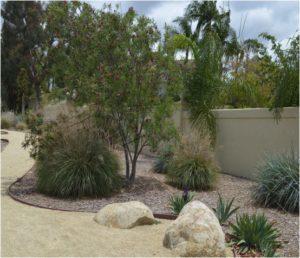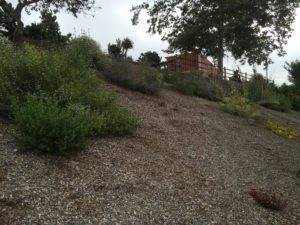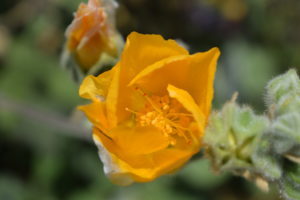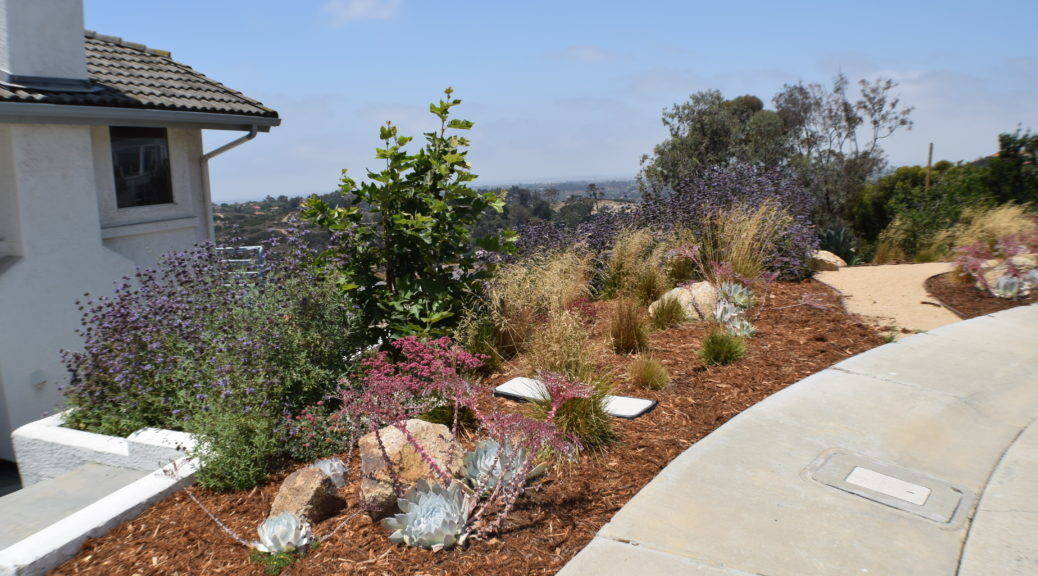Why Garden with Native Plants?
Gardening with native plants can bring the beauty of California into your own landscape while receiving numerous benefits. One of the benefits that I enjoy the most is inviting wildlife like hummingbirds, butterflies, and beneficial insects.
By landscaping with natives you can save 573,375 gallons in 10 years. Watering a lawn is like showering 9 times a day.

Lower maintenance costs by planting with natives; they do well with some attention and care, but require less water to no fertilizer and less pruning than non-native plants. Native plants use and require 68% less maintenance.
Reduce Pesticides
Native plants have developed their own defenses against many pests and diseases. Since most pesticides kill indiscriminately, beneficial insects become secondary targets in the fight against pests.
Pest management cost are 60% lower and by reducing or eliminating pesticides will let nature take control over the garden; and by letting nature take over we can keep the garden toxins out of our creeks and watersheds.
Soils
Most native plants perform better without any fertilizer. Extra nutrients push plants to grow quickly, sometimes beyond naturally supportable levels, and can shorten their life span. Mulching can be a valuable practice in low-maintenance gardening. A layer of mulch slows water evaporation, discourages weed germination, and creates a favorable environment at the soil interface for beneficial biological bacteria.
Knowing your soil determines how often you water your soil; whither it’s sand, clay, or loam influences how fast water penetrates before running off, how often plants will need to be watered, and how much water you’ll need to apply.
Growing Conditions
Native plants grow best under natural and familiar conditions, which are also known as biotic communities. Common California plant communities include northern and southern oak woodland, valley grassland, chaparral, desert, coastal sage scrub and bluff, mixed evergreen, and redwood forest. Choosing plants that are native to your landscape’s community will help ensure their optimum health and performance.

Planting
Although most California natives can be planted at any time of year, it is best to plant them in the ground during the fall or early winter. This gives them time to establish a healthy root system and build the energy for new growth and stunning floral displays in spring and summer.

Pruning
While many non-native plants are often pruned throughout the year to keep up with their water and fertilizer induced growth, for most native plants pruning once per year is sufficient and generates 56% less green waste than non-natives.
Give them room to grow by properly spacing them in your garden design. Crowded plants need more frequent pruning and care.
Watering
After two to five years of establishment many native plants can survive with minimal or supplemental water. Proper watering can present a challenge when first becoming acquainted with native plants. Under watering young native plants is a frequent cause of death, while over-watering can cause root rot and kill more established species. Some native species can maintain a healthy appearance for much of the year while being watered only 1–4 times per month. California native plants need minimal irrigation beyond normal rainfall. Saving water conserves a vital amount of our limited resources as well as money savings too. Native plants use 83% less water than non-native plants.

